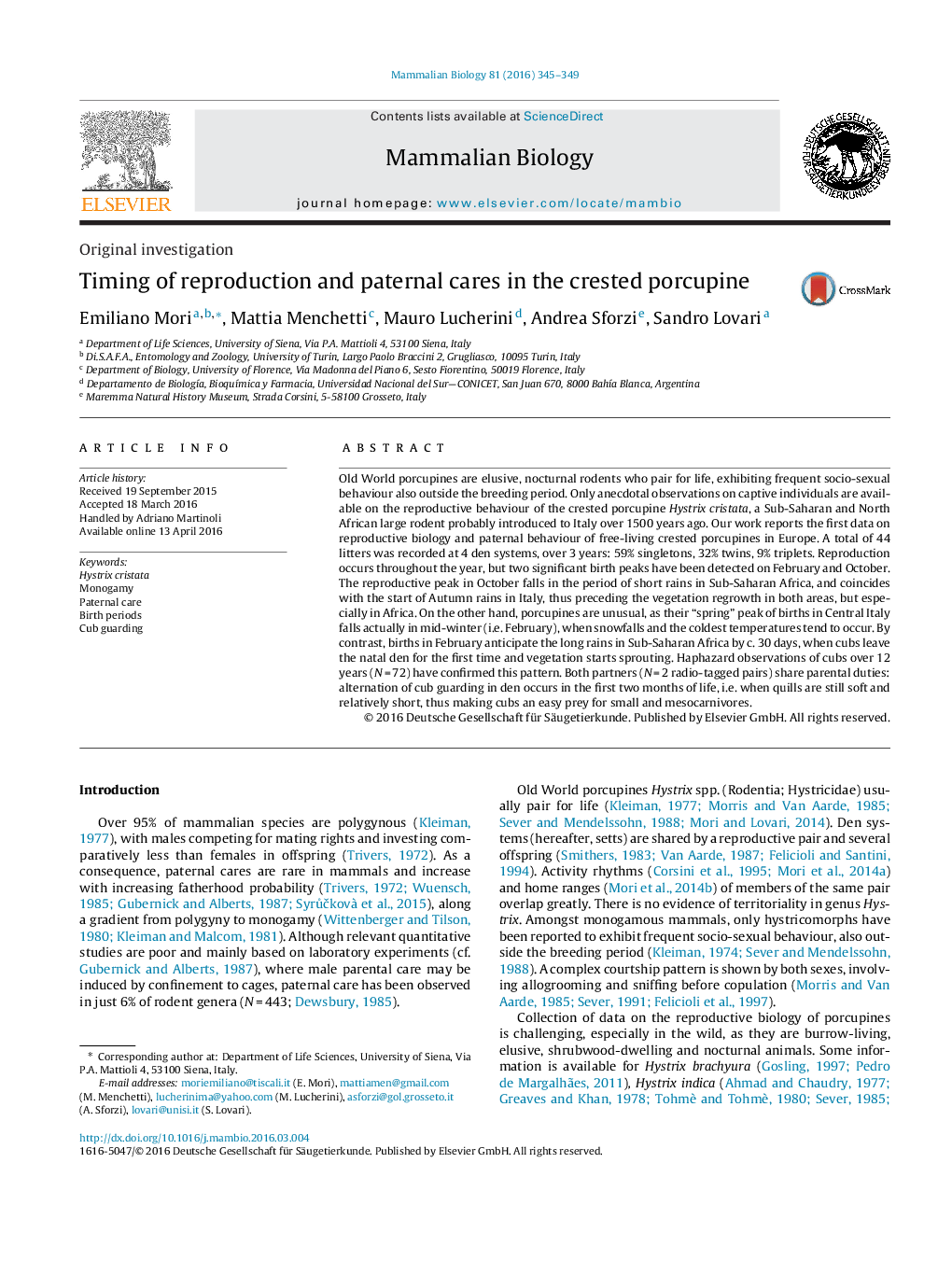| کد مقاله | کد نشریه | سال انتشار | مقاله انگلیسی | نسخه تمام متن |
|---|---|---|---|---|
| 2193302 | 1098368 | 2016 | 5 صفحه PDF | دانلود رایگان |
Old World porcupines are elusive, nocturnal rodents who pair for life, exhibiting frequent socio-sexual behaviour also outside the breeding period. Only anecdotal observations on captive individuals are available on the reproductive behaviour of the crested porcupine Hystrix cristata, a Sub-Saharan and North African large rodent probably introduced to Italy over 1500 years ago. Our work reports the first data on reproductive biology and paternal behaviour of free-living crested porcupines in Europe. A total of 44 litters was recorded at 4 den systems, over 3 years: 59% singletons, 32% twins, 9% triplets. Reproduction occurs throughout the year, but two significant birth peaks have been detected on February and October. The reproductive peak in October falls in the period of short rains in Sub-Saharan Africa, and coincides with the start of Autumn rains in Italy, thus preceding the vegetation regrowth in both areas, but especially in Africa. On the other hand, porcupines are unusual, as their “spring” peak of births in Central Italy falls actually in mid-winter (i.e. February), when snowfalls and the coldest temperatures tend to occur. By contrast, births in February anticipate the long rains in Sub-Saharan Africa by c. 30 days, when cubs leave the natal den for the first time and vegetation starts sprouting. Haphazard observations of cubs over 12 years (N = 72) have confirmed this pattern. Both partners (N = 2 radio-tagged pairs) share parental duties: alternation of cub guarding in den occurs in the first two months of life, i.e. when quills are still soft and relatively short, thus making cubs an easy prey for small and mesocarnivores.
Journal: Mammalian Biology - Zeitschrift für Säugetierkunde - Volume 81, Issue 4, July 2016, Pages 345–349
